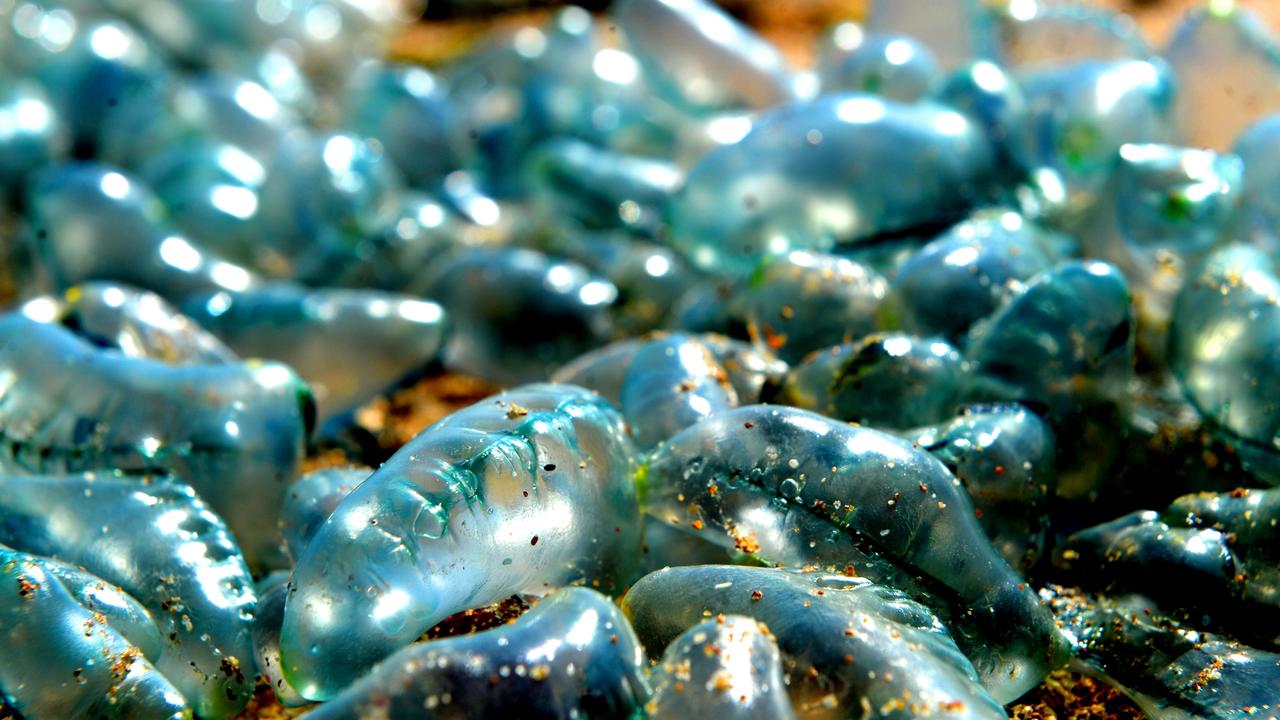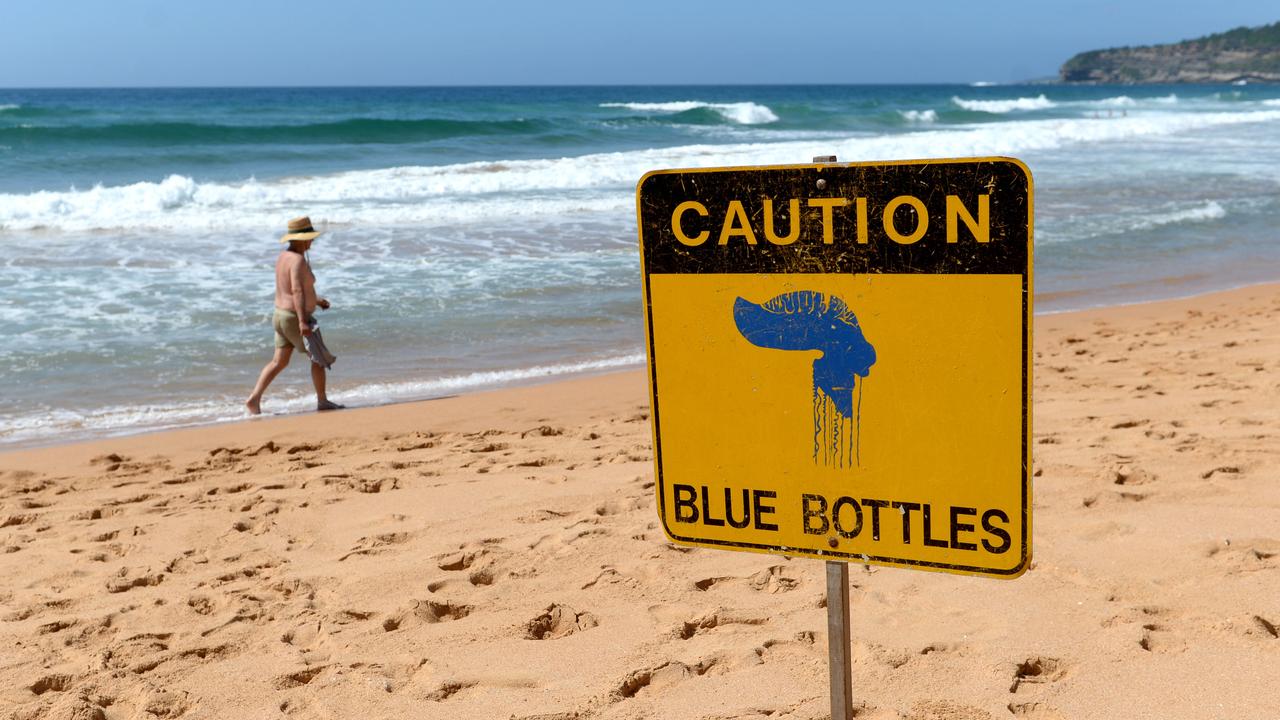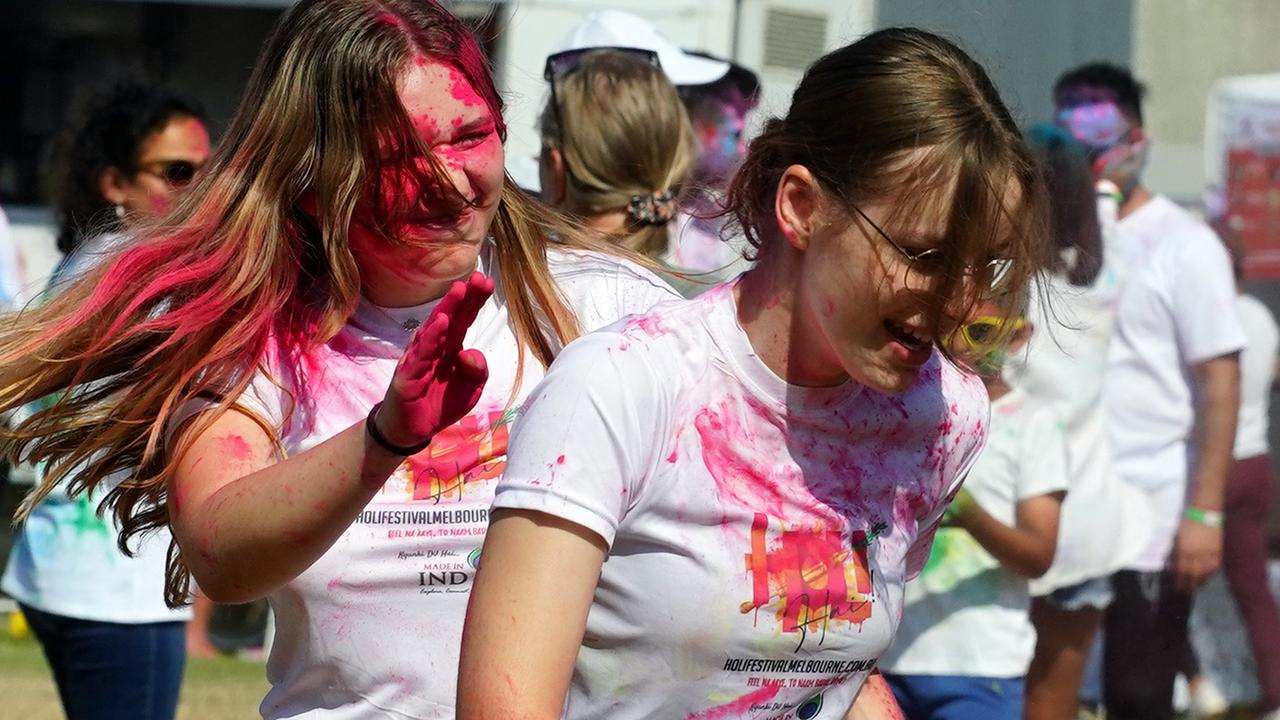Bluebottle season swarms Sydney beaches, what to do if stung
After days of Sydney beaches being stormed by an onslaught of bluebottles, experts say the summer of potential stings isn’t over just yet.
After days of the NSW coastline being stormed by an armada of bluebottles, experts say the summer of potential stings isn’t over just yet.
Strong north-easterly winds came in on Thursday night and continued into Friday, blowing scores of bluebottles from Coffs Harbour on the state’s north coast down to Merimbula on the far south coast.
Thousands of bluebottles washed up on beaches in Sydney, including Maroubra and Bronte in the eastern suburbs as well as Warriewood and Palm Beach on the northern side of the city.
The onslaught of bluebottles, cause by a north-easterly wind, was likely to ease into a southerly over the next few days but experts say the onslaught of bluebottles could make a return before autumn arrives.
RELATED: Bluebottles descend on NSW beaches

“Bluebottles are passive drifters, and are at the mercy of the wind (their floats are pushed by the wind),” Global-Change Ecology Professor David Schoeman of the University of Sunshine Coast told news.com.au.
“When we get periods of persistent onshore winds, and especially when they are strong and from the northeast, we get bluebottles coming ashore. It might be true that we get more north-easters during summer here on the east coast during La Niña conditions, but this is natural climate variability rather than climate change.”
A spokesman from the Bureau of Meteorology told news.com.au that a southerly onshore wind will be prevalent for the next several days around Sydney, however the return of a nor’easter may cause the pesky bluebottles to return to our favourite beaches before summer ends.

Bluebottles are a non-tropical marine stinger whose blue, balloon-like sail sits above the water and is attached to a long tentacle extending below.
The tentacle is covered in stinging cells called nematocysts. When they touch human skin it reacts by injecting a small amount of a toxin that causes irritation and can be painful.
Dr Lisa-ann Gershwin, director of the Australian Marine Stinger Advisory and co-founder of the Jellyfish App (which gives users advice, identification information and treatment tips when stung by a jellyfish anywhere in the world) said she’d never see bluebottles like what’s been washed ashore in recent days.
“Bluebottle numbers are not about the time of year, it has everything to do with the wind,” she explained.
“But I have never seen masses of them like some of the photos taken at Bondi Beach … it’s the worst I’ve seen.”
While further research into the breeding habits of bluebottles are needed, given the interaction of other jellyfish species, Dr Gershwin says the warmer weather could lead to increased numbers.

“The warmer weather may lead to more breeding so we get larger populations,” she explained.
And this summer we have had quite a bit of strong onshore winds.”
Dr Gershwin said the best thing to do when stung by a bluebottle was to reach for a bottle of cold water straight away.
“To treat bluebottle stings, the Australia Resuscitation Council recommends that for a definite bluebottles sting to rinse the area with sea water first, then follow with hot water or ice for the pain,” she said.
Applying freshwater straight away will make it worse, because freshwater as the first step will cause the stinger to inject more venom.
“The salt in sea water rinses away the stings and stops it from pumping more venom in,” Dr Gershwin said. “So it’s really important to neutralise the stinging cells first then follow with hot water or ice for the pain.”




